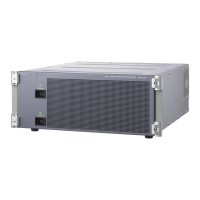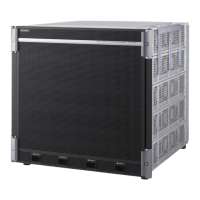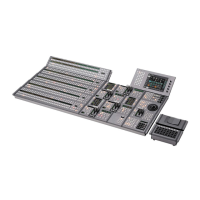DME Wipes
Chapter
6
Overview
A DME wipe is a wipe transition that uses an image
transformation effect to change from one video image to
the next.
There are two types of DME wipe: those that can be
selected in a common transition, and those that can be
selected in an independent key transition.
You can also execute a DME wipe using a resizer for
transitions, with key selected for the next transition, and
independent key transitions (resizer DME wipes).
The DME wipe functional limitations and conditions vary
depending on the switcher processor used. On the MVS-
3000A without an MKS-6570 DME board installed, the
same functional limitations and conditions exist as for the
MVS-3000.
For details, see “DME Wipe Support (MVS-6520/6530/
3000A)”
(
1
p. 114) and “DME Wipe Support (MVS-
3000)”
(
1
p. 115).
Types of DME Wipe Pattern
The patterns used for a DME wipe fall into two broad
classes.
Preset patterns: Predetermined fixed patterns
User programmable DME patterns: Patterns that you
can create using keyframe effects
(
1
p. 121)
Notes
User programmable DME patterns are not supported on
the MVS-3000.
DME wipe pattern groups
DME wipe patterns fall into the following groups.
The new video slides in over the old video.
The new video appears squeezed over the old video, and progressively expands to cover it.
The old video splits, and the new video appears in the gap.
The new video moves like a door closing, and progressively covers the old video.
The old video rotates about an axis and is replaced by the new video. During the transition, the signal
from the utility bus of the M/E bank appears as the background.
The new video appears over the old video as a mirror effect slides in all four directions (up, down, left,
right).
The new video appears wrapped around a sphere over the old video, then returns to the original video
while unwrapping.
The new video appears with a trail over the old video. Then the original video is restored gradually
from the surrounding area.
The new video appears with a wave-like effect over the old video. Then the original video returns as
the effect reduces.
The new video appears over the old video like outwardly moving ripples.
